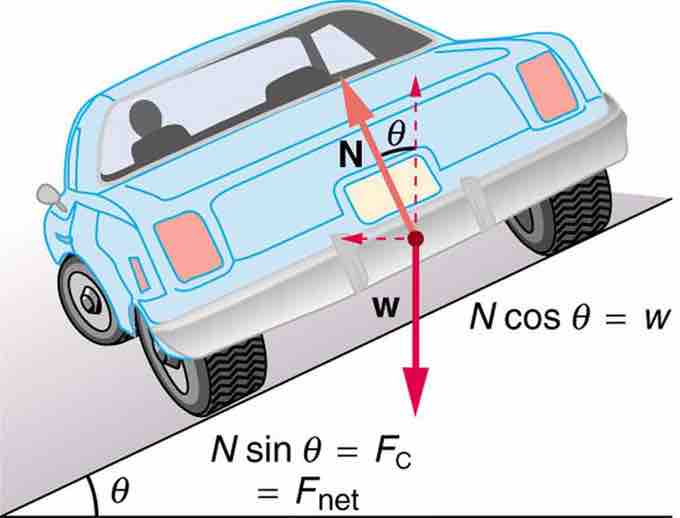Overview
As an example of a uniform circular motion and its application, let us now consider banked curves, where the slope of the road helps you negotiate the curve. The greater the angle
Uniform Circular Motion and Determining Ideal Banking Conditions
For ideal banking, the net external force equals the horizontal centripetal force in the absence of friction. The components of the normal force

Car on a Banked Curve
The car on this banked curve is moving away and turning to the left.
Above is a free body diagram for a car on a frictionless banked curve. The only two external forces acting on the car are its weight
Because the car does not leave the surface of the road, the net vertical force must be zero, meaning that the vertical components of the two external forces must be equal in magnitude and opposite in direction. From the figure, we see that the vertical component of the normal force is
Dividing the above equations yields:
Taking the inverse tangent gives:
for an ideally banked curve with no friction.
This expression can be understood by considering how